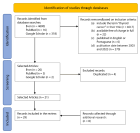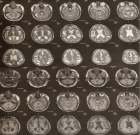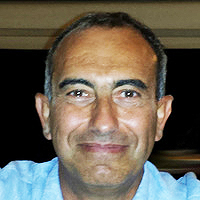Abstract
Review Article
Exploring Environmental Neurotoxicity Assessment Using Human Stem Cell-Derived Models
Narimane Kebieche*, Farzana Liakath Ali, Seungae Yim, Mohamed Ali, Claude Lambert and Rachid Soulimani
Published: 15 November, 2024 | Volume 8 - Issue 1 | Pages: 054-068
Neurotoxicity is increasingly recognized as a critical factor impacting long-term health, with growing evidence linking it to both neurodevelopmental and neurodegenerative diseases. Pesticides, widely used in agriculture and industry, have emerged as significant contributors to neurotoxic risk, given their capacity to disrupt key neurodevelopmental processes at low exposure levels. As conventional animal models present limitations in interspecies translation, human-derived neuron-based in vitro screening strategies are urgently needed to assess potential toxicants accurately. Human-induced pluripotent stem cells (hiPSCs) offer an innovative and scalable source for human-specific neuronal models that complement traditional animal-based approaches and support the development of predictive assays for neurotoxicity. Recent various stem cell models, including 2D cultures, 3D organoids, and microfluidic systems, are now available, advancing predictive neurotoxicology by simulating key aspects of human neural development and function. With the integration of High-Throughput (HT) and High-Content (HC) screening methodologies, these hiPSC-based systems enable efficient, large-scale evaluation of chemical effects on neural cells, enhancing our ability to detect early biomarkers of neurotoxic effects. Identifying early biomarkers of neurotoxic is essential to developing therapeutic interventions before irreversible damage occurs. This is particularly crucial in the context of developmental neurotoxicity, where early exposure to toxicants can have lifelong consequences. This review specifically presents an in-depth overview of the current progress in hiPSC-derived neural models and their applications in neurotoxicity testing, with a specific focus on their utility in assessing pesticide-induced neurotoxicity. Emphasizing future research priorities, we highlight the potential of these models to transform predictive toxicology, offering more human-relevant assessments and advancing the field toward a more precise evaluation of environmental neurotoxicants.
Read Full Article HTML DOI: 10.29328/journal.jsctt.1001044 Cite this Article Read Full Article PDF
Keywords:
Neurotoxicity; Neurodevelopmental diseases; Neurodegenerative diseases; Pesticides; Human-induced Pluripotent Stem Cells (hiPSCs); Developmental neurotoxicity; Predictive toxicology
References
- Grandjean P, Landrigan P. Developmental neurotoxicity of industrial chemicals. Lancet. 2006;368:2167–2178. Available from: https://doi.org/10.1016/s0140-6736(06)69665-7
- Grandjean P, Landrigan PJ. Neurobehavioural effects of developmental toxicity. Lancet Neurol. 2014;13:330–338. Available from: https://doi.org/10.1016/s1474-4422(13)70278-3
- Heyer DB, Meredith RM. Environmental toxicology: Sensitive periods of development and neurodevelopmental disorders. NeuroToxicol. 2017;58:23–41. Available from: https://doi.org/10.1016/j.neuro.2016.10.017
- Landrigan PJ, Goldman LR. Children’s vulnerability to toxic chemicals: A challenge and opportunity to strengthen health and environmental policy. Health Aff (Millwood). 2011;30:842–850. Available from: https://doi.org/10.1377/hlthaff.2011.0151
- Kroon T, Sierksma MC, Meredith RM. Investigating mechanisms underlying neurodevelopmental phenotypes of autistic and intellectual disability disorders: A perspective. Front Syst Neurosci. 2013;7:75. Available from: https://doi.org/10.3389/fnsys.2013.00075
- Harris A, Seckl J. Glucocorticoids, prenatal stress and the programming of disease. Horm Behav. 2011;59:279–289. Available from: https://doi.org/10.1016/j.yhbeh.2010.06.007
- Raciti M, Ceccatelli S. Epigenetic mechanisms in developmental neurotoxicity. Neurotoxicol Teratol. 2018;66:94–101. Available from: https://doi.org/10.1016/j.ntt.2017.12.002
- Dagnino S. Unravelling the exposome: Conclusions and thoughts for the future. In: Dagnino S, Macherone A, editors. Unraveling the Exposome. Cham: Springer International Publishing. 2018; 425–437.
- Wild CP. Complementing the genome with an ‘exposome’: The outstanding challenge of environmental exposure measurement in molecular epidemiology. Cancer Epidemiol Biomarkers Prev. 2005;14:1847–1850. Available from: https://doi.org/10.1158/1055-9965.epi-05-0456
- Feil R, Fraga MF. Epigenetics and the environment: Emerging patterns and implications. Nat Rev Genet. 2012;13:97–109. Available from: https://doi.org/10.1038/nrg3142
- Hartung T. On mapping the human toxome. ALTEX. 2011;28:83–93. Available from: https://doi.org/10.14573/altex.2011.2.083
- Hartung T. Toxicology for the twenty-first century. Nature. 2009;460:208–212. Available from: https://doi.org/10.1038/460208a
- Paparella M, Bennekou SH, Bal-Price A. An analysis of the limitations and uncertainties of in vivo developmental neurotoxicity testing and assessment to identify the potential for alternative approaches. Reprod Toxicol. 2020;96:327–336. Available from: https://doi.org/10.1016/j.reprotox.2020.08.002
- Hofrichter M, Nimtz L, Tigges J, Kabiri Y, Schröter F, Royer-Pokora B, et al. Comparative performance analysis of human iPSC-derived and primary neural progenitor cells (NPC) grown as neurospheres in vitro. Stem Cell Res. 2017;25:72–82. Available from: https://doi.org/10.1016/j.scr.2017.10.013
- Pamies D. Guidance document on Good Cell and Tissue Culture Practice 2.0 (GCCP 2.0). ALTEX. Epub ahead of print 2021. Available from: https://doi.org/10.14573/altex.2111011
- Liu W, Deng Y, Liu Y, Gong W, Deng W. Stem Cell Models for Drug Discovery and Toxicology Studies: Stem Cell Models For Drug Discovery And Toxicology. J Biochem Mol Toxicol. 2013;27:17–27. Available from: https://doi.org/10.1002/jbt.21470
- Biehl JK, Russell B. Introduction to Stem Cell Therapy. J Cardiovasc Nurs. 2009;24:98–103. Available from: https://doi.org/10.1097/jcn.0b013e318197a6a5
- Dulak J, Szade K, Szade A, Nowak W, Józkowicz A. Adult stem cells: hopes and hypes of regenerative medicine. Acta Biochim Pol. 2015;62:329–337. Available from: https://doi.org/10.18388/abp.2015_1023
- Seiler AEM, Spielmann H. The validated embryonic stem cell test to predict embryotoxicity in vitro. Nat Protoc. 2011;6:961–978. Available from: https://doi.org/10.1038/nprot.2011.348
- Jaramillo-Ferrada PA, Wolvetang EJ, Cooper-White JJ. Differential mesengenic potential and expression of stem cell-fate modulators in mesenchymal stromal cells from human-term placenta and bone marrow. J Cell Physiol. 2012;227:3234–3242. Available from: https://doi.org/10.1002/jcp.24014
- Visvader JE, Clevers H. Tissue-specific designs of stem cell hierarchies. Nat Cell Biol. 2016;18:349–355. Available from: https://doi.org/10.1038/ncb3332
- Takahashi K, Yamanaka S. Induction of pluripotent stem cells from mouse embryonic and adult fibroblast cultures by defined factors. Cell. 2006;126:663–676. Available from: https://doi.org/10.1016/j.cell.2006.07.024
- Yu J, Vodyanik MA, Smuga-Otto K, Antosiewicz-Bourget J, Frane JL, Tian S, et al. Induced pluripotent stem cell lines derived from human somatic cells. Science. 2007;318:1917–1920. Available from: https://doi.org/10.1126/science.1151526
- Shtrichman R, Germanguz I, Eldor JI. Induced pluripotent stem cells (iPSCs) derived from different cell sources and their potential for regenerative and personalized medicine. CMM. 2013;13:792–805. Available from: https://doi.org/10.2174/1566524011313050010
- Perrier AL, Tabar V, Barberi T, Rubio ME, Bruses J, Topf N, et al. Derivation of midbrain dopamine neurons from human embryonic stem cells. Proc Natl Acad Sci USA. 2004;101:12543–12548. Available from: https://doi.org/10.1073/pnas.0404700101
- Stummann T, Bremer S. The possible impact of human embryonic stem cells on safety pharmacological and toxicological assessments in drug discovery and drug development. CSCR. 2008;3:117–130. Available from: https://doi.org/10.2174/157488808784223104
- Hartung T. Thoughts on limitations of animal models. Parkinsonism Relat Disord. 2008;14–S83. Available from: https://doi.org/10.1016/j.parkreldis.2008.04.003
- Zhao Z, Zhang D, Yang F, Xu M, Zhao S, Pan T, et al. Evolutionarily conservative and non-conservative regulatory networks during primate interneuron development revealed by single-cell RNA and ATAC sequencing. Cell Res. 2022;32:425–436. Available from: https://doi.org/10.1038/s41422-022-00635-9
- Kumar KK, Aboud AA, Bowman AB. The potential of induced pluripotent stem cells as a translational model for neurotoxicological risk. NeuroToxicol. 2012;33:518–529. Available from: https://doi.org/10.1016/j.neuro.2012.02.005
- Hu B-Y, Weick JP, Yu J, Ma LX, Zhang XQ, Thomson JA, et al. Neural differentiation of human induced pluripotent stem cells follows developmental principles but with variable potency. Proc Natl Acad Sci USA. 2010;107:4335–4340. Available from: https://doi.org/10.1073/pnas.0910012107
- Liu Q, Pedersen OZ, Peng J, Couture LA, Rao MS, Zeng X. Optimizing dopaminergic differentiation of pluripotent stem cells for the manufacture of dopaminergic neurons for transplantation. Cytotherapy. 2013;15:999–1010. Available from: https://doi.org/10.1016/j.jcyt.2013.03.006
- Wang S, Bates J, Li X, Schanz S, Chandler-Militello D, Levine C, et al. Human iPSC-derived oligodendrocyte progenitor cells can myelinate and rescue a mouse model of congenital hypomyelination. Cell Stem Cell. 2013;12:252–264. Available from: https://doi.org/10.1016/j.stem.2012.12.002
- Odawara A, Katoh H, Matsuda N, Suzuki I. Physiological maturation and drug responses of human induced pluripotent stem cell-derived cortical neuronal networks in long-term culture. Sci Rep. 2016;6:26181. Available from: https://doi.org/10.1038/srep26181
- Odawara A, Matsuda N, Ishibashi Y, Yokoi R, Suzuki I. Toxicological evaluation of convulsant and anticonvulsant drugs in human induced pluripotent stem cell-derived cortical neuronal networks using an MEA system. Sci Rep. 2018;8:10416. Available from: https://doi.org/10.1038/s41598-018-28835-7
- Tukker AM, de Groot MW, Wijnolts FM, Kasteel EE, Hondebrink L, Westerink RH. Is the time right for in vitro neurotoxicity testing using human iPSC-derived neurons? ALTEX. 2016;33(3):261–271. Available from: https://doi.org/10.14573/altex.1510091
- Little D, Ketteler R, Gissen P, Devine MJ. Using stem cell–derived neurons in drug screening for neurological diseases. Neurobiol Aging. 2019;78:130–141. Available from: https://doi.org/10.1016/j.neurobiolaging.2019.02.008
- Tukker AM, Wijnolts FMJ, de Groot A, Westerink RHS. Human iPSC-derived neuronal models for in vitro neurotoxicity assessment. NeuroToxicol. 2018;67:215–225. Available from: https://doi.org/10.1016/j.neuro.2018.06.007
- Tukker AM, Wijnolts FMJ, de Groot A, Westerink RHS. In vitro techniques for assessing neurotoxicity using human iPSC-derived neuronal models. In: Aschner M, Costa L, editors. Cell Culture Techniques. New York, NY: Springer New York; 2019; 17–35. Available from: https://dspace.library.uu.nl/handle/1874/392153
- Zhang P, Xia N, Reijo Pera RA. Directed dopaminergic neuron differentiation from human pluripotent stem cells. JoVE. 2014;51737. Available from: https://doi.org/10.3791/51737
- Liu Y, Liu H, Sauvey C, Yao L, Zarnowska ED, Zhang SC. Directed differentiation of forebrain GABA interneurons from human pluripotent stem cells. Nat Protoc. 2013;8:1670–1679. Available from: https://doi.org/10.1038/nprot.2013.106
- Sun AX, Yuan Q, Tan S, Xiao Y, Wang D, Khoo AT, et al. Direct induction and functional maturation of forebrain GABAergic neurons from human pluripotent stem cells. Cell Rep. 2016;16:1942–1953. Available from: https://doi.org/10.1016/j.celrep.2016.07.035
- Corti S, Nizzardo M, Simone C, Falcone M, Nardini M, Ronchi D, et al. Genetic correction of human induced pluripotent stem cells from patients with spinal muscular atrophy. Sci Transl Med. 2012;4. Available from: https://doi.org/10.1126/scitranslmed.3004108
- Sareen D, O’Rourke JG, Meera P, Muhammad AK, Grant S, Simpkinson M, et al. Targeting RNA foci in iPSC-derived motor neurons from ALS patients with a C9ORF72 repeat expansion. Sci Transl Med. 2013;5. Available from: https://doi.org/10.1126/scitranslmed.3007529
- Wen Z, Nguyen HN, Guo Z, Lalli MA, Wang X, Su Y, et al. Synaptic dysregulation in a human iPS cell model of mental disorders. Nature. 2014;515:414–418. Available from: https://doi.org/10.1038/nature13716
- Gunhanlar N, Shpak G, van der Kroeg M, Gouty-Colomer LA, Munshi ST, Lendemeijer B, et al. A simplified protocol for differentiation of electrophysiologically mature neuronal networks from human induced pluripotent stem cells. Mol Psychiatry. 2018;23:1336–1344. Available from: https://doi.org/10.1038/mp.2017.56
- Clevers H. Modeling development and disease with organoids. Cell. 2016;165:1586–1597. Available from: https://doi.org/10.1016/j.cell.2016.05.082
- Di Lullo E, Kriegstein AR. The use of brain organoids to investigate neural development and disease. Nat Rev Neurosci. 2017;18:573–584. Available from: https://doi.org/10.1038/nrn.2017.107
- Chandrasekaran A, Avci HX, Ochalek A, Rösingh LN, Molnár K, László L, et al. Comparison of 2D and 3D neural induction methods for the generation of neural progenitor cells from human induced pluripotent stem cells. Stem Cell Res. 2017;25:139–151. Available from: https://doi.org/10.1016/j.scr.2017.10.010
- Lancaster MA, Knoblich JA. Organogenesis in a dish: Modeling development and disease using organoid technologies. Science. 2014;345:1247125. Available from: https://doi.org/10.1126/science.1247125
- Elshazzly M, Lopez MJ, Reddy V, Caban O. Embryology, central nervous system. In: StatPearls. Treasure Island (FL): StatPearls Publishing; 2023. (accessed 17 June 2022). Available from: http://www.ncbi.nlm.nih.gov/books/NBK526024/
- Lancaster MA, Corsini NS, Wolfinger S, Gustafson EH, Phillips AW, Burkard TR, et al. Guided self-organization and cortical plate formation in human brain organoids. Nat Biotechnol. 2017;35:659–666. Available from: https://doi.org/10.1038/nbt.3906
- Qian X, Nguyen HN, Song MM, Hadiono C, Ogden SC, Hammack C, et al. Brain-region-specific organoids using mini-bioreactors for modeling ZIKV exposure. Cell. 2016;165:1238–1254. Available from: https://doi.org/10.1016/j.cell.2016.04.032
- Jo J, Xiao Y, Sun AX, Cukuroglu E, Tran HD, Göke J, et al. Midbrain-like organoids from human pluripotent stem cells contain functional dopaminergic and neuromelanin-producing neurons. Cell Stem Cell. 2016;19:248–257. Available from: https://doi.org/10.1016/j.stem.2016.07.005
- Fan P, Wang Y, Xu M, Han X, Liu Y. The application of brain organoids in assessing neural toxicity. Front Mol Neurosci. 2022;15:799397. Available from: https://doi.org/10.3389/fnmol.2022.799397
- Muguruma K, Nishiyama A, Kawakami H, Hashimoto K, Sasai Y. Self-organization of polarized cerebellar tissue in 3D culture of human pluripotent stem cells. Cell Rep. 2015;10:537–550. Available from: https://doi.org/10.1016/j.celrep.2014.12.051
- Birey F, Andersen J, Makinson CD, Islam S, Wei W, Huber N, et al. Assembly of functionally integrated human forebrain spheroids. Nature. 2017;545:54–59. Available from: https://doi.org/10.1038/nature22330
- Mansour AA, Gonçalves JT, Bloyd CW, Li H, Fernandes S, Quang D, et al. An in vivo model of functional and vascularized human brain organoids. Nat Biotechnol. 2018;36:432–441. Available from: https://doi.org/10.1038/nbt.4127
- Shi Y, Sun L, Wang M, Liu J, Zhong S, Li R, et al. Vascularized human cortical organoids (vOrganoids) model cortical development in vivo. PLoS Biol. 2020;18. Available from: https://doi.org/10.1371/journal.pbio.3000705
- Schultz L, Zurich M-G, Culot M, da Costa A, Landry C, Bellwon P, et al. Evaluation of drug-induced neurotoxicity based on metabolomics, proteomics and electrical activity measurements in complementary CNS in vitro models. Toxicol In Vitro. 2015;30:138–165. Available from: https://doi.org/10.1016/j.tiv.2015.05.016
- Lippmann ES, Azarin SM, Kay JE, Nessler RA, Wilson HK, Al-Ahmad A, et al. Derivation of blood-brain barrier endothelial cells from human pluripotent stem cells. Nat Biotechnol. 2012;30:783–791. Available from: https://doi.org/10.1038/nbt.2247
- Wilson HK, Canfield SG, Hjortness MK, Palecek SP, Shusta EV. Exploring the effects of cell seeding density on the differentiation of human pluripotent stem cells to brain microvascular endothelial cells. Fluids Barriers CNS. 2015;12:13. Available from: https://doi.org/10.1186/s12987-015-0007-9
- Lippmann ES, Al-Ahmad A, Azarin SM, Palecek SP, Shusta EV. A retinoic acid-enhanced, multicellular human blood-brain barrier model derived from stem cell sources. Sci Rep. 2015;4:4160. Available from: https://doi.org/10.1038/srep04160
- Wang YI, Abaci HE, Shuler ML. Microfluidic blood–brain barrier model provides in vivo‐like barrier properties for drug permeability screening. Biotechnol Bioeng. 2017;114:184–194. Available from: https://doi.org/10.1002/bit.26045
- Vatine GD, Barrile R, Workman MJ, Sances S, Barriga BK, Rahnama M, et al. Human iPSC-derived blood-brain barrier chips enable disease modeling and personalized medicine applications. Cell Stem Cell. 2019;24(6):995-1005.e6. Available from: https://doi.org/10.1016/j.stem.2019.05.011
- Pham MT, Pollock KM, Rose MD, Cary WA, Stewart HR, Zhou P, et al. Generation of human vascularized brain organoids. NeuroReport. 2018;29:588–593. Available from: https://doi.org/10.1097/wnr.0000000000001014
- Cakir B, Xiang Y, Tanaka Y, Kural MH, Parent M, Kang YJ, et al. Engineering of human brain organoids with a functional vascular-like system. Nat Methods. 2019;16:1169–1175. Available from: https://doi.org/10.1038/s41592-019-0586-5
- Perestrelo A, Águas A, Rainer A, Forte G. Microfluidic Organ/Body-on-a-Chip devices at the convergence of biology and microengineering. Sensors. 2015;15:31142–31170. Available from: https://doi.org/10.3390/s151229848
- Zhuang Q-C, Ning R-Z, Ma Y, Lin J-M. Recent developments in microfluidic chip for in vitro cell-based research. Chin J Anal Chem. 2016;44:522–532. Available from: https://doi.org/10.1016/S1872-2040(16)60919-2
- Sances S, Ho R, Vatine G, West D, Laperle A, Meyer A, et al. Human iPSC-derived endothelial cells and microengineered organ-chip enhance neuronal development. Stem Cell Reports. 2018;10:1222–1236. Available from: https://doi.org/10.1016/j.stemcr.2018.02.012
- Liu L, Koo Y, Russell T, Yun Y. A three-dimensional brain-on-a-chip using human iPSC-derived GABAergic neurons and astrocytes. Methods Mol Biol. 2022;2492:117-128. Available from: https://doi.org/10.1007/978-1-0716-2289-6_6
- Faley SL, Neal EH, Wang JX, Bosworth AM, Weber CM, Balotin KM, et al. iPSC-derived brain endothelium exhibits stable, long-term barrier function in perfused hydrogel scaffolds. Stem Cell Reports. 2019;12:474–487. Available from: https://doi.org/10.1016/j.stemcr.2019.01.009
- Spijkers XM, Pasteuning-Vuhman S, Dorleijn JC, Vulto P, Wevers NR, Pasterkamp RJ. A directional 3D neurite outgrowth model for studying motor axon biology and disease. Sci Rep. 2021;11:2080. Available from: https://doi.org/10.1038/s41598-021-81335-z
- Pei Y, Peng J, Behl M, Sipes NS, Shockley KR, Rao MS, et al. Comparative neurotoxicity screening in human iPSC-derived neural stem cells, neurons and astrocytes. Brain Res. 2016;1638:57–73. Available from: https://doi.org/10.1016/j.brainres.2015.07.048
- Bose R, Spulber S, Ceccatelli S. The threat posed by environmental contaminants on neurodevelopment: What can we learn from neural stem cells? Int J Mol Sci. 2023;24:4338. Available from: https://doi.org/10.3390/ijms24054338
- Bal-Price AK, Coecke S, Costa L, Crofton KM, Fritsche E, Goldberg A, et al. Advancing the science of developmental neurotoxicity (DNT): Testing for better safety evaluation. ALTEX. 2012;29(2):202-215. Available from: https://doi.org/10.14573/altex.2012.2.202
- Bal-Price AK, Hogberg HT, Buzanska L, Lenas P, van Vliet E, Hartung T. In vitro developmental neurotoxicity (DNT) testing: Relevant models and endpoints. NeuroToxicology. 2010;31:545–554. Available from: https://doi.org/10.1016/j.neuro.2009.11.006
- Fritsche E, Grandjean P, Crofton KM, Aschner M, Goldberg A, Heinonen T, et al. Consensus statement on the need for innovation, transition and implementation of developmental neurotoxicity (DNT) testing for regulatory purposes. Toxicol Appl Pharmacol. 2018;354:3–6. Available from: https://doi.org/10.1016/j.taap.2018.02.004
- Fritsche E, Barenys M, Klose J, Masjosthusmann S, Nimtz L, Schmuck M, et al. Corrigendum to “Current availability of stem cell-based in vitro methods for developmental neurotoxicity (DNT) testing.” Toxicol Sci. 2018;165:531–531. Available from: https://doi.org/10.1093/toxsci/kfy195
- Fritsche E, Barenys M, Klose J, Masjosthusmann S, Nimtz L, Schmuck M, et al. Development of the concept for stem cell-based developmental neurotoxicity evaluation. Toxicol Sci. 2018;165:14–20. Available from: https://doi.org/10.1093/toxsci/kfy175
- Paparella M, Bennekou SH, Bal-Price A. An analysis of the limitations and uncertainties of in vivo developmental neurotoxicity testing and assessment to identify the potential for alternative approaches. Reprod Toxicol. 2020;96:327-336. Available from: https://doi.org/10.1016/j.reprotox.2020.08.002
- Bal-Price A, Hogberg HT, Crofton KM, Daneshian M, FitzGerald RE, Fritsche E. Recommendation on test readiness criteria for new approach methods in toxicology: Exemplified for developmental neurotoxicity. ALTEX 2018;306–352. Available from: https://doi.org/10.14573/altex.1712081
- Bal-Price A, Pistollato F, Sachana M, Bopp SK, Munn S, Worth A. Strategies to improve the regulatory assessment of developmental neurotoxicity (DNT) using in vitro methods. Toxicol Appl Pharmacol. 2018;354:7–18. Available from: https://doi.org/10.1016/j.taap.2018.02.008
- Hrstka SCL, Ankam S, Agac B, Klein JP, Moore RA, Narapureddy B, et al. Proteomic analysis of human iPSC-derived sensory neurons implicates cell stress and microtubule dynamics dysfunction in bortezomib-induced peripheral neurotoxicity. Experimental Neurology 2021;335:113520. Available from: https://doi.org/10.1016/j.expneurol.2020.113520
- Bal-Price A, Hogberg HT, Crofton KM, Daneshian M, FitzGerald RE, Fritsche E, et al. Recommendation on test readiness criteria for new approach methods in toxicology: Exemplified for developmental neurotoxicity. ALTEX 2018;35:306–352. Available from: https://doi.org/10.14573/altex.1712081
- Chen L, Yoo S-E, Na R, Liu Y, Ran Q. Cognitive impairment and increased Aβ levels induced by paraquat exposure are attenuated by enhanced removal of mitochondrial H2O2. Neurobiology of Aging 2012;33:432.e15-432.e26. Available from: https://doi.org/10.1016/j.neurobiolaging.2011.01.008
- De Felice A, Scattoni ML, Ricceri L, Calamandrei G. Prenatal exposure to a common organophosphate insecticide delays motor development in a mouse model of idiopathic autism. PLoS One. 2015;10(3). Available from: https://doi.org/10.1371/journal.pone.0121663
- Kardas F, Bayram AK, Demirci E, Akin L, Ozmen S, Kendirci M, et al. Increased serum phthalates (MEHP, DEHP) and bisphenol A concentrations in children with autism spectrum disorder: The role of endocrine disruptors in autism etiopathogenesis. J Child Neurol. 2016;31(7):629–635. Available from: https://doi.org/10.1177/0883073815609150
- Li G, Kim C, Kim J, Yoon H, Zhou H, Kim J. Common pesticide, dichlorodiphenyltrichloroethane (DDT), increases amyloid-β levels by impairing the function of ABCA1 and IDE: Implication for Alzheimer’s disease. J Alzheimers Dis. 2015;46(1):109–122. Available from: https://doi.org/10.3233/jad-150024
- Pearson BL, Simon JM, McCoy ES, Salazar G, Fragola G, Zylka MJ. Identification of chemicals that mimic transcriptional changes associated with autism, brain aging and neurodegeneration. Nat Commun. 2016;7:11173. Available from: https://doi.org/10.1038/ncomms11173
- Richardson JR, Taylor MM, Shalat SL, Guillot TS, Caudle WM, Hossain MM, et al. Developmental pesticide exposure reproduces features of attention deficit hyperactivity disorder. FASEB J. 2015;29(5):1960–1972. Available from: https://doi.org/10.1096/fj.14-260901
- Shelton JF, Geraghty EM, Tancredi DJ, Delwiche LD, Schmidt RJ, Ritz B, et al. Neurodevelopmental disorders and prenatal residential proximity to agricultural pesticides: The CHARGE study. Environ Health Perspect. 2014;122(10):1103–1109. Available from: https://doi.org/10.1289/ehp.1307044
- Tyler CR, Allan AM. The effects of arsenic exposure on neurological and cognitive dysfunction in human and rodent studies: A review. Curr Envir Health Rpt. 2014;1(2):132–147. Available from: https://doi.org/10.1007/s40572-014-0012-1
- von Ehrenstein OS, Ling C, Cui X, Cockburn M, Park AS, Yu F, Wu J, et al. Prenatal and infant exposure to ambient pesticides and autism spectrum disorder in children: Population-based case-control study. BMJ. 2019;365. Available from: https://doi.org/10.1136/bmj.l962
- Wang B, Du Y. Cadmium and its neurotoxic effects. Oxid Med Cell Longev. 2013;2013:1–12. Available from: https://doi.org/10.1155/2013/898040
- Li S, Zhang L, Huang R, Xu T, Parham F, Behl M, et al. Evaluation of chemical compounds that inhibit neurite outgrowth using GFP-labeled iPSC-derived human neurons. NeuroToxicol. 2021;83:137–145. Available from: https://doi.org/10.1016/j.neuro.2021.01.003
- Di Consiglio E, Pistollato F, Mendoza-De Gyves E, Bal-Price A, Testai E. Integrating biokinetics and in vitro studies to evaluate developmental neurotoxicity induced by chlorpyrifos in human iPSC-derived neural stem cells undergoing differentiation towards neuronal and glial cells. Reprod Toxicol. 2020;98:174–188. Available from: https://doi.org/10.1016/j.reprotox.2020.09.010
- Radio NM, Breier JM, Shafer TJ, Mundy WR. Assessment of chemical effects on neurite outgrowth in PC12 cells using high content screening. Toxicol Sci. 2008;105(1):106–118. Available from: https://doi.org/10.1093/toxsci/kfn114
- Kamata S, Hashiyama R, Hana-ika H, Ohkubo I, Saito R, et al. Cytotoxicity comparison of 35 developmental neurotoxicants in human induced pluripotent stem cells (iPSC), iPSC-derived neural progenitor cells, and transformed cell lines. Toxicol in Vitro. 2020;69:104999. Available from: https://doi.org/10.1016/j.tiv.2020.104999
- Pistollato F, de Gyves EM, Carpi D, Bopp SK, Nunes C, Worth A, et al. Assessment of developmental neurotoxicity induced by chemical mixtures using an adverse outcome pathway concept. Environ Health. 2020;19:23. Available from: https://doi.org/10.1186/s12940-020-00578-x
- Davidsen N, Lauvås AJ, Myhre O, Ropstad E, Carpi D, Gyves EM, et al. Exposure to human relevant mixtures of halogenated persistent organic pollutants (POPs) alters neurodevelopmental processes in human neural stem cells undergoing differentiation. Reprod Toxicol. 2021;100:17–34. Available from: https://doi.org/10.1016/j.reprotox.2020.12.013
- Park SM, Jo NR, Lee B, Jung EM, Lee SD, Jeung EB, et al. Establishment of a developmental neurotoxicity test by Sox1-GFP mouse embryonic stem cells. Reprod Toxicol. 2021;104:96–105. Available from: https://doi.org/10.1016/j.reprotox.2021.07.004
- Ishibashi Y, Nagafuku N, Kanda Y, Suzuki I. Evaluation of neurotoxicity for pesticide-related compounds in human iPS cell-derived neurons using microelectrode array. Toxicol in Vitro. 2023;93:105668. Available from: https://doi.org/10.1016/j.tiv.2023.105668
- Bartmann K, Bendt F, Dönmez A, Haag D, Keßel HE, Masjosthusmann S, et al. A human iPSC-based in vitro neural network formation assay to investigate neurodevelopmental toxicity of pesticides. ALTEX. 2023;40(3):452–470. Available from: https://doi.org/10.14573/altex.2206031
- Paul KC, Krolewski RC, Lucumi Moreno E, Blank J, Holton KM, Ahfeldt T, et al. A pesticide and iPSC dopaminergic neuron screen identifies and classifies Parkinson-relevant pesticides. Nat Commun. 2023;14(1):2803. Available from: https://doi.org/10.1038/s41467-023-38215-z
- Garcia SJ, Seidler FJ, Slotkin TA. Developmental neurotoxicity elicited by prenatal or postnatal chlorpyrifos exposure: Effects on neurospecific proteins indicate changing vulnerabilities. Environ Health Perspect. 2003;111(3):297–303. Available from: https://doi.org/10.1289/ehp.5791
- Tsuji R, Crofton KM. Developmental neurotoxicity guideline study: Issues with methodology, evaluation and regulation. Congenit Anomal. 2012;52(3):122–128. Available from: https://doi.org/10.1111/j.1741-4520.2012.00374.x
- Bal-Price A, Hogberg HT, Crofton KM, Daneshian M, FitzGerald RE, Fritsche E, et al. Recommendation on test readiness criteria for new approach methods in toxicology: Exemplified for developmental neurotoxicity. ALTEX. 2018;35(3):306–352. Available from: https://doi.org/10.14573/altex.1712081
- Pamies D, Block K, Lau P, Gribaldo L, Pardo CA, Barreras P, et al. Rotenone exerts developmental neurotoxicity in a human brain spheroid model. Toxicol Appl Pharmacol. 2018;354:101–114. Available from: https://doi.org/10.1016/j.taap.2018.02.003
- Modafferi S, Zhong X, Kleensang A, Murata Y, Fagiani F, Pamies D, et al. Gene–environment interactions in developmental neurotoxicity: A case study of synergy between chlorpyrifos and CHD8 knockout in human brainspheres. Environ Health Perspect. 2021;129(7):077001. Available from: https://doi.org/10.1289/ehp8580
- Lam D, Enright HA, Cadena J, George VK, Soscia DA, Tooker AC, et al. Spatiotemporal analysis of 3D human iPSC-derived neural networks using a 3D multi-electrode array. Front Cell Neurosci. 2023;17:1287089. Available from: https://doi.org/10.3389/fncel.2023.1287089
- Mariani A, Comolli D, Fanelli R, Forloni G, De Paola M. Neonicotinoid pesticides affect developing neurons in experimental mouse models and in human induced pluripotent stem cell (iPSC)-derived neural cultures and organoids. Cells. 2024;13(5):1295. Available from: https://doi.org/10.3390/cells13151295
- Kobolak J, Teglasi A, Bellak T, Janstova Z, Molnar K, Zana M, et al. Human induced pluripotent stem cell-derived 3D-neurospheres are suitable for neurotoxicity screening. Cells. 2020;9(5):1122. Available from: https://doi.org/10.3390/cells9051122
- Sirenko O, Parham F, Dea S, Sodhi N, Biesmans S, Mora-Castilla S, et al. Functional and mechanistic neurotoxicity profiling using human iPSC-derived neural 3D cultures. Toxicol Sci. 2019;167(1):58–76. Available from: https://doi.org/10.1093/toxsci/kfy218
- Campisi M, Shin Y, Osaki T, Hajal C, Chiono V, Kamm RD. 3D self-organized microvascular model of the human blood-brain barrier with endothelial cells, pericytes and astrocytes. Biomaterials. 2018;180:117–129. Available from: https://doi.org/10.1016/j.biomaterials.2018.07.014
- Picollet-D’hahan N, Zuchowska A, Lemeunier I, Le Gac S. Multiorgan-on-a-chip: A systemic approach to model and decipher inter-organ communication. Trends Biotechnol. 2021;39(7):788–810. Available from: https://doi.org/10.1016/j.tibtech.2020.11.014
- Koo Y, Hawkins BT, Yun Y. Three-dimensional (3D) tetra-culture brain on chip platform for organophosphate toxicity screening. Sci Rep. 2018;8:2841. Available from: https://doi.org/10.1038/s41598-018-20876-2
- Liu L, Koo Y, Akwitti C, Russell T, Gay E, Laskowitz DT, et al. Three-dimensional (3D) brain microphysiological system for organophosphates and neurochemical agent toxicity screening. PLoS One. 2019;14(11). Available from: https://doi.org/10.1371/journal.pone.0224657
- Amend N, Koller M, Schmitt C, Worek F, Wille T. The suitability of a polydimethylsiloxane-based (PDMS) microfluidic two compartment system for the toxicokinetic analysis of organophosphorus compounds. Toxicol Lett. 2023;388:24–29. Available from: https://doi.org/10.1016/j.toxlet.2023.10.007
- Smirnova L, Hogberg HT, Leist M, Hartung T. Developmental neurotoxicity – Challenges in the 21st century and in vitro opportunities. ALTEX. 2014;31(2):129–156. Available from: https://doi.org/10.14573/altex.1403271
- Augustyniak J, Lenart J, Zychowicz M, Lipka G, Gaj P, Kolanowska M, et al. Sensitivity of hiPSC-derived neural stem cells (NSC) to pyrroloquinoline quinone depends on their developmental stage. Toxicol In Vitro. 2017;45:434–444. Available from: https://doi.org/10.1016/j.tiv.2017.05.017
- Pei Y, Sierra G, Sivapatham R, Swistowski A, Rao MS, Zeng X. A platform for rapid generation of single and multiplexed reporters in human iPSC lines. Sci Rep. 2015;5:9205. Available from: https://doi.org/10.1038/srep09205
- Pei Y, Peng J, Behl M, Sipes NS, Shockley KR, Rao MS, et al. Comparative neurotoxicity screening in human iPSC-derived neural stem cells, neurons, and astrocytes. Brain Res. 2016;1638:57–73. Available from: https://doi.org/10.1016/j.brainres.2015.07.048
- Pistollato F, Carpi D, Mendoza-de Gyves E, Paini A, Bopp SK, Worth A, et al. Combining in vitro assays and mathematical modelling to study developmental neurotoxicity induced by chemical mixtures. Reprod Toxicol. 2021;105:101–119. Available from: https://doi.org/10.1016/j.reprotox.2021.08.007
- Rana P, Luerman G, Hess D, Rubitski E, Adkins K, Somps C. Utilization of iPSC-derived human neurons for high-throughput drug-induced peripheral neuropathy screening. Toxicol In Vitro. 2017;45:111–118. Available from: https://doi.org/10.1016/j.tiv.2017.08.014
- Shirakawa T, Suzuki I. Approach to neurotoxicity using human iPSC neurons: Consortium for safety assessment using human iPS cells. Curr Pharm Biotechnol. 2020;21(11):780–786. Available from: https://doi.org/10.2174/1389201020666191129103730
- Sirenko O, Parham F, Dea S, Sodhi N, Biesmans S, Mora-Castilla S, et al. Functional and mechanistic neurotoxicity profiling using human iPSC-derived neural 3D cultures. Toxicol Sci. 2019;167(1):58–76. Available from: https://doi.org/10.1093/toxsci/kfy218
- Tukker AM, Wijnolts FMJ, de Groot A, Westerink RHS. Applicability of hiPSC-derived neuronal cocultures and rodent primary cortical cultures for in vitro seizure liability assessment. Toxicol Sci. 2020;178(1):71–87. Available from: https://doi.org/10.1093/toxsci/kfaa136
- Wellens S, Dehouck L, Chandrasekaran V, Singh P, Loiola RA, Sevin E, et al. Evaluation of a human iPSC-derived BBB model for repeated dose toxicity testing with cyclosporine A as model compound. Toxicol In Vitro. 2021;73:105112. Available from: https://doi.org/10.1016/j.tiv.2021.105112
- Slavin I, Dea S, Arunkumar P, Sodhi N, Montefusco S, Siqueira-Neto J, et al. Human iPSC-derived 2D and 3D platforms for rapidly assessing developmental, functional, and terminal toxicities in neural cells. Int J Mol Sci. 2021;22(4):1908. Available from: https://doi.org/10.3390/ijms22041908
- Pamies D, Wiersma D, Katt ME, Zhao L, Burtscher J, Harris G, et al. Human iPSC 3D brain model as a tool to study chemical-induced dopaminergic neuronal toxicity. Neurobiol Dis. 2022;169:105719. Available from: https://doi.org/10.1016/j.nbd.2022.105719
- Pomeshchik Y, Klementieva O, Gil J, Martinsson I, Hansen MG, de Vries T, et al. Human iPSC-derived hippocampal spheroids: An innovative tool for stratifying Alzheimer disease patient-specific cellular phenotypes and developing therapies. Stem Cell Rep. 2020;15(2):256–273. Available from: https://doi.org/10.1016/j.stemcr.2020.06.001
- Liu L, Koo Y, Russell T, Gay E, Li Y, Yun Y. Three-dimensional brain-on-chip model using human iPSC-derived GABAergic neurons and astrocytes: Butyrylcholinesterase post-treatment for acute malathion exposure. PLoS One. 2020;15(4). Available from: https://doi.org/10.1371/journal.pone.0230335
- Campisi M, Shin Y, Osaki T, Hajal C, Chiono V, Kamm RD. 3D self-organized microvascular model of the human blood-brain barrier with endothelial cells, pericytes, and astrocytes. Biomaterials. 2018;180:117–129. Available from: https://doi.org/10.1016/j.biomaterials.2018.07.014
- Lee C-T, Bendriem RM, Wu WW, Shen RF. 3D brain organoids derived from pluripotent stem cells: promising experimental models for brain development and neurodegenerative disorders. J Biomed Sci. 2017;24:59. Available from: https://doi.org/10.1186/s12929-017-0362-8
- Potjewyd G, Kellett KAB, Hooper NM. 3D hydrogel models of the neurovascular unit to investigate blood–brain barrier dysfunction. Neuronal Signaling. 2021;5(4). Available from: https://doi.org/10.1042/ns20210027
- Xiao S, Coppeta JR, Rogers HB, Isenberg BC, Zhu J, Olalekan SA, et al. A microfluidic culture model of the human reproductive tract and 28-day menstrual cycle. Nat Commun. 2017;8:14584. Available from: https://doi.org/10.1038/ncomms14584
- Taylor AM, Blurton-Jones M, Rhee SW, Cribbs DH, Cotman CW, Jeon NL. A microfluidic culture platform for CNS axonal injury, regeneration and transport. Nat Methods. 2005;2(9):599–605. Available from: https://doi.org/10.1038/nmeth777
- Bang S, Lee S, Choi N, Kim HN. Emerging brain‐pathophysiology‐mimetic platforms for studying neurodegenerative diseases: Brain organoids and brains‐on‐a‐ Adv Healthcare Mater. 2021;10(8):2002119. Available from: https://doi.org/10.1002/adhm.202002119
- Koo Y, Hawkins BT, Yun Y. Three-dimensional (3D) tetra-culture brain on chip platform for organophosphate toxicity screening. Sci Rep. 2018;8:2841. Available from: https://doi.org/10.1038/s41598-018-20876-2
- Lanciotti A, Brignone MS, Macioce P, Visentin S. Human iPSC-derived astrocytes: A powerful tool to study primary astrocyte dysfunction in the pathogenesis of rare leukodystrophies. Int J Mol Sci. 2021;23(1):274. Available from: https://doi.org/10.3390/ijms23010274
- Koo Y, Hawkins BT, Yun Y. Three-dimensional (3D) tetra-culture brain on chip platform for organophosphate toxicity screening. Sci Rep. 2018;8:2841. Available from: https://doi.org/10.1038/s41598-018-20876-2
- Linville RM, DeStefano JG, Sklar MB, Xu Z, Farrell AM, Bogorad MI, et al. Human iPSC-derived blood-brain barrier microvessels: validation of barrier function and endothelial cell behavior. Biomaterials. 2019;190–191:24–37. Available from: https://doi.org/10.1016/j.biomaterials.2018.10.023
- Middelkamp HHT, Verboven AHA, De Sá Vivas AG, Schoenmaker C, Klein Gunnewiek TM, Passier R, et al. Cell type-specific changes in transcriptomic profiles of endothelial cells, iPSC-derived neurons and astrocytes cultured on microfluidic chips. Sci Rep. 2021;11:2281. Available from: https://doi.org/10.1038/s41598-021-81933-x
- Popova G, Soliman SS, Kim CN, Keefe MG, Hennick KM, Jain S, et al. Human microglia states are conserved across experimental models and regulate neural stem cell responses in chimeric organoids. Cell Stem Cell. 2021;28(12):2153-2166.e6. Available from: https://doi.org/10.1016/j.stem.2021.08.015
- Soubannier V, Maussion G, Chaineau M, Sigutova V, Rouleau G, Durcan TM, et al. Characterization of human iPSC-derived astrocytes with potential for disease modeling and drug discovery. Neurosci Lett. 2020;731:135028. Available from: https://doi.org/10.1016/j.neulet.2020.135028
- Wörsdörfer P, Dalda N, Kern A, Krüger S, Wagner N, Kwok CK, et al. Generation of complex human organoid models including vascular networks by incorporation of mesodermal progenitor cells. Sci Rep. 2019;9:15663. Available from: https://doi.org/10.1038/s41598-019-52204-7
- Zhang Y, Sloan SA, Clarke LE, Caneda C, Plaza CA, Blumenthal PD, et al. Purification and characterization of progenitor and mature human astrocytes reveals transcriptional and functional differences with mouse. Neuron. 2016;89:37–53. Available from: https://doi.org/10.1016/j.neuron.2015.11.013
- Nix C, Ghassemi M, Crommen J, Fillet M. Overview on microfluidics devices for monitoring brain disorder biomarkers. TrAC Trends in Analytical Chemistry. 2022;155:116693. Available from: https://scite.ai/reports/overview-on-microfluidics-devices-for-A3rxYKme
- Chang C-Y, Ting H-C, Liu C-A, Su HL, Chiou TW, Harn HJ, et al. Induced pluripotent stem cells: A powerful neurodegenerative disease modeling tool for mechanism study and drug discovery. Cell Transplant. 2018;27:1588–1602. Available from: https://doi.org/10.1177/0963689718775406
- Li S, Xia M. Review of high-content screening applications in toxicology. Arch Toxicol. 2019;93:3387–3396. Available from: https://doi.org/10.1007/s00204-019-02593-5
- Zhang Q, Caudle WM, Pi J, Bhattacharya S, Andersen ME, Kaminski NE, et al. Embracing systems toxicology at single-cell resolution. Curr Opin Toxicol. 2019;16:49–57. Available from: https://doi.org/10.1016/j.cotox.2019.04.003
- Ashammakhi N, Darabi MA, Çelebi‐Saltik B, Tutar R, Hartel MC, Lee J, et al. Microphysiological systems: Next generation systems for assessing toxicity and therapeutic effects of nanomaterials. Small Methods. 2020;4:1900589. Available from: https://doi.org/10.1002/smtd.201900589
- Mayr A, Klambauer G, Unterthiner T, Hochreiter S. DeepTox: Toxicity prediction using deep learning. Front Environ Sci. 2016;3. Available from: http://dx.doi.org/10.3389/fenvs.2015.00080
- Srivastava A, Hanig JP. Quantitative neurotoxicology: Potential role of artificial intelligence/deep learning approach. J Appl Toxicol. 2021;41:996–1006. Available from: https://doi.org/10.1002/jat.4098
- Myllynen P, Pasanen M, Pelkonen O. Human placenta: A human organ for developmental toxicology research and biomonitoring. Placenta. 2005;26:361–371. Available from: https://doi.org/10.1016/j.placenta.2004.09.006
- Rice D, Barone S. Critical periods of vulnerability for the developing nervous system: Evidence from humans and animal models. Environ Health Perspect. 2000;108:511–533. Available from: https://doi.org/10.1289/ehp.00108s3511
Figures:

Figure 1

Figure 2
Similar Articles
-
Exploring Environmental Neurotoxicity Assessment Using Human Stem Cell-Derived ModelsNarimane Kebieche*,Farzana Liakath Ali,Seungae Yim,Mohamed Ali,Claude Lambert,Rachid Soulimani. Exploring Environmental Neurotoxicity Assessment Using Human Stem Cell-Derived Models. . 2024 doi: 10.29328/journal.jsctt.1001044; 8: 054-068
Recently Viewed
-
Pneumothorax as Complication of CT Guided Lung Biopsy: Frequency, Severity and Assessment of Risk FactorsGaurav Raj*,Neha Kumari,Neha Singh,Kaustubh Gupta,Anurag Gupta,Pradyuman Singh,Hemant Gupta. Pneumothorax as Complication of CT Guided Lung Biopsy: Frequency, Severity and Assessment of Risk Factors. J Radiol Oncol. 2025: doi: 10.29328/journal.jro.1001075; 9: 012-016
-
The Police Power of the National Health Surveillance Agency – ANVISADimas Augusto da Silva*,Rafaela Marinho da Silva. The Police Power of the National Health Surveillance Agency – ANVISA. Arch Cancer Sci Ther. 2024: doi: 10.29328/journal.acst.1001046; 8: 063-076
-
A Comparative Study of Serum Sodium and Potassium Levels across the Three Trimesters of PregnancyOtoikhila OC and Seriki SA*. A Comparative Study of Serum Sodium and Potassium Levels across the Three Trimesters of Pregnancy. Clin J Obstet Gynecol. 2023: doi: 10.29328/journal.cjog.1001137; 6: 108-116
-
Chaos to Cosmos: Quantum Whispers and the Cosmic GenesisOwais Farooq*,Romana Zahoor*. Chaos to Cosmos: Quantum Whispers and the Cosmic Genesis. Int J Phys Res Appl. 2025: doi: 10.29328/journal.ijpra.1001107; 8: 017-023
-
Phytochemical Compounds and the Antifungal Activity of Centaurium pulchellum Ethanol Extracts in IraqNoor Jawad Khadhum, Neepal Imtair Al-Garaawi*, Antethar Jabbar Al-Edani. Phytochemical Compounds and the Antifungal Activity of Centaurium pulchellum Ethanol Extracts in Iraq. J Plant Sci Phytopathol. 2024: doi: 10.29328/journal.jpsp.1001137; 8: 079-083
Most Viewed
-
Evaluation of Biostimulants Based on Recovered Protein Hydrolysates from Animal By-products as Plant Growth EnhancersH Pérez-Aguilar*, M Lacruz-Asaro, F Arán-Ais. Evaluation of Biostimulants Based on Recovered Protein Hydrolysates from Animal By-products as Plant Growth Enhancers. J Plant Sci Phytopathol. 2023 doi: 10.29328/journal.jpsp.1001104; 7: 042-047
-
Sinonasal Myxoma Extending into the Orbit in a 4-Year Old: A Case PresentationJulian A Purrinos*, Ramzi Younis. Sinonasal Myxoma Extending into the Orbit in a 4-Year Old: A Case Presentation. Arch Case Rep. 2024 doi: 10.29328/journal.acr.1001099; 8: 075-077
-
Feasibility study of magnetic sensing for detecting single-neuron action potentialsDenis Tonini,Kai Wu,Renata Saha,Jian-Ping Wang*. Feasibility study of magnetic sensing for detecting single-neuron action potentials. Ann Biomed Sci Eng. 2022 doi: 10.29328/journal.abse.1001018; 6: 019-029
-
Pediatric Dysgerminoma: Unveiling a Rare Ovarian TumorFaten Limaiem*, Khalil Saffar, Ahmed Halouani. Pediatric Dysgerminoma: Unveiling a Rare Ovarian Tumor. Arch Case Rep. 2024 doi: 10.29328/journal.acr.1001087; 8: 010-013
-
Physical activity can change the physiological and psychological circumstances during COVID-19 pandemic: A narrative reviewKhashayar Maroufi*. Physical activity can change the physiological and psychological circumstances during COVID-19 pandemic: A narrative review. J Sports Med Ther. 2021 doi: 10.29328/journal.jsmt.1001051; 6: 001-007

HSPI: We're glad you're here. Please click "create a new Query" if you are a new visitor to our website and need further information from us.
If you are already a member of our network and need to keep track of any developments regarding a question you have already submitted, click "take me to my Query."





















































































































































